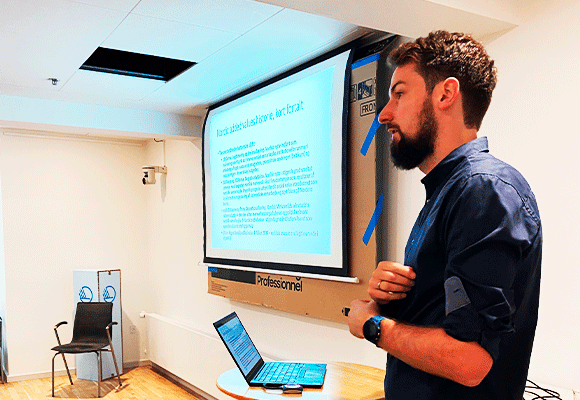
New recommendation for the Nordic Council of Ministers: Get a clearer insight into what adds value to your collaboration
A key concept in the Nordic Co-operation is ‘Nordic added value’ and its Scandinavian version ‘nordisk nytte’. But what really adds value when it comes to cross-border co-operation on climate, culture and research? A new report written by a researcher at the Nordic Humanities Centre shows that it is important to have a clearer understanding of the different interpretations of the term.
- The interpretation of what it means for a collaborative Nordic initiative to provide ‘added value’ is clearly very different depending on which industry or country you’re in.
These are the words of historian Frederik Forrai Ørskov. Together with researchers from the Centre for Nordic Studies at the University of Helsinki, Frederik Forrai Øsrkov has spent the best part of a year examining documents, annual reports and project descriptions, and he has also interviewed representatives of 12 institutions within the Nordic Co-operation to learn more about how the concept of ‘Nordic added value’ is perceived.
Read the report in Danish: Nordic added value in inter-ministerial Nordic co-operation

Important baggage
And why is this important? The term has historical baggage. It was introduced in the 1990s after the fall of the Berlin Wall, when Finland and Sweden joined the EU and budgets for Nordic co-operation were rather heavily cut. According to Frederik Forrai Ørskov, there was a need for a yardstick to measure which initiatives provided ‘Nordic benefits’. In connection with this evaluation, 13 institutions within the Nordic Co-operation were closed down. Later, the creation of ‘Nordic added value’ became integral in the standard statutes of the Nordic institutions, and during the 2010s the concept took on central importance when the Nordic institutions collectively and individually argued for their political relevance. So there is good reason for reaching consensus on what the term actually covers.
”Working on the report has made it clear that there is a need for a greater awareness of how the concept of ‘Nordic added value’ is perceived within and across the different sectors and institutions.
The world’s most integrated region
Today, plans for future Nordic Co-operation were presented and formulated in the strategy called Vision 2030, which states that the Nordic Region will be the most sustainable and integrated region in the world by 2030.
In order to achieve this, ambitious initiatives across the various institutions and sectors of the Nordic Co-operation are required – initiatives that depend on a shared overall understanding of what the value of the Nordic Co-operation is.
For this reason, at the end of August, NordForsk, a research advisory and funding organisation under the Nordic Council of Ministers for Education and Research, invited Frederik Forrai Ørskov to present the conclusions and recommendations of the report at a working seminar with the Secretariat to the Nordic Council of Ministers at the Nordic House in Copenhagen.
Main goals for Nordic co-operation
The report makes six specific recommendations, but in general Frederik Ørskov says:
– Working on the report has made it clear that there is a need for an awareness of how the concept of ‘Nordic added value’ is perceived within and across the different sectors and institutions and how it relates to the plans in Vision 2030.
And Arne Flåøyen, director of NordForsk, is in complete agreement. In a press release on the organisation’s website, he says:
– I consider this to be an important publication because creating Nordic added value is a core task and main goal of Nordic co-operation. I strongly encourage everyone involved in Nordic co-operation to read and discuss the report thoroughly.